Geologically-Driven Migration of Landmines and Explosive Remnants of War—A Feature Focusing on the Western Balkans
Abstract
1. Introduction
2. Materials and Methods
2.1. Study Area from Geological Perspective
2.2. Study Area against the Background of the Hostilities at the End of the 20th Century
2.3. Methods
3. Hazards Posed by the Unnoticed Migration of Landmines and ERWs
3.1. Usage of Landmines during the Western Balkan Hostilities
3.2. Migration of Landmines and ERWs Induced by Floods
“[...] the Black Sea is littered with hundreds of mines dropped by both sides in Russia’s war on Ukraine, posing a serious threat to people and the reopening of grain shipping routes halted by Moscow’s naval blockade.”
“[. . . ] can’t say, exactly, how many mines have been washed away to non-contaminated areas. But basically, it’s very dangerous because the public isn’t expecting them at all and isn’t prepared. They must immediately try to find out which municipalities could be affected, inform and warn the population there.”
“[. . . ] it has to do with mostly plastic mines, which are very light. These mines get washed many kilometers away.”
- remaining in its position;
- facing scouring due to the removal of sediment in its vicinity, eventually relocating into the hydrodynamics-induced carved-out scour holes (Figure 3, panel C);
- being mobilized and relocating along with the rolling, sliding, and jostling bedload transport on the traction carpet (Figure 3, panel D);
- leaving the traction carpet due to increasing lift components of the fluid forces and bouncing along with the flow (saltation) (Figure 3, panel E);
- being entrained and relocating as suspended load within the water column (Figure 3, panel F);
- being buried by bedload material or suspended sediment during or after one of the above-mentioned processes (Figure 3, panel G).
3.3. Migration of Landmines and ERW Induced by Gravitational Mass Movements
4. Scientific Gaps, Research Challenges, Possible Solutions
4.1. Experimental Investigations under Laboratory Conditions
- formulas for suspended sediment and bedload transport by Carstens [35] based on experiments for the settlement of cylindrical mines in the seabed as a result of gravity waves;
- graphical wave scour model approach “Prediction of Mine Settlement in Sediment” [36];
- empirical model “Wave-Induced Spread Sheet Prediction (WISSP)” [37];
- “NBURY” model [37];
- Defense Research Agency Mine Burial Environment (DRAMBUIE) model [37];
- Vortex Lattice models for scour burial [37];
- Mulhearn model for bedform burial [37];
4.2. Computational Models
4.3. Stochastic-Deterministic Model
5. Discussion
6. Conclusions
- Landmines and ERWs have been and continue to be a predominant threat, affecting local populations and economic aspirations long after the end of hostilities.
- The existing literature lacks or provides inadequate data on the dynamics of hazard migration of landmines and ERWs. This is particularly evident in the case of the Western Balkans, where such events have occurred in the past (e.g., migration of landmines due to landslides caused by heavy rainfall and flooding).
- Advanced numerical modeling can be used to estimate the increase in hazard due to ordnance migration. Such a model should include all physical aspects of the environment: flow hydrodynamics, sediment transport, slope stability, and multi-phase mass flow dynamics. The model should also include all aspects of ordnance transport mechanics: deposition in scour holes, flow transport, bedload transport, deposition, and burial in bedload material.
- As uncertainty is inherent in all modeling, the results of such a model should be validated against data from laboratory experiments and field measurements. Laboratory models should be used to investigate the dynamics of a single ordnance, as the existing literature lacks sufficient data for the cases of landslides and floods.
Author Contributions
Funding
Data Availability Statement
Acknowledgments
Conflicts of Interest
Abbreviations
| ERW | explosive remnant of war |
| UXO | unexploded ordnance |
| AXO | abandoned explosive ordnance |
| IED | improvised explosive devices |
| FB&H | Federation of Bosnia and Herzegovina |
| RS | Republic of Srpska |
| B&H | Bosnia and Herzegovina (FB&H + RS) |
| NATO | North Atlantic Treaty Organization |
| BHMAC | Bosnia and Herzegovina Mine Action Centre |
| MACRS | Mine Action Centre of the Republic of Serbia |
| SMAC | Serbian Mine Action Centre |
| EOM | Explosive Ordnance Model |
References
- United Nations Office of Disarmament Affairs. Convention on the Prohibition of the Use, Stockpiling, Production and Transfer of Anti-Personnel Mines and on Their Destruction. Available online: https://geneva-s3.unoda.org/static-unoda-site/pages/templates/anti-personnel-landmines-convention/APLC%2BEnglish.pdf (accessed on 31 May 2023).
- Roberts, S.; Williams, J. After the Guns Fall Silent: The Enduring Legacy of Landmines, 1st ed.; Vietnam Veterans of America Foundation: Washington, DC, USA, 1995. [Google Scholar]
- Explosive Remnants of War. Available online: http://www.the-monitor.org/en-gb/the-issues/erw.aspx (accessed on 14 May 2023).
- Crowley, H.; Dabbeek, J.; Despotaki, V.; Rodrigues, D.; Martins, L.; Silva, V.; Romão, X.; Pereira, N.; Weatherill, G.; Danciu, L. European Seismic Risk Model (ESRM20); EFEHR Technical Report 002, V1.0.0; EFEHR: Zurich, Switzerland, 2021. [Google Scholar] [CrossRef]
- Hazard.EFEHR Web Platform, Hazard Map: ESHM20, SA(5 Hz)—Mean Return Period 475yrs. Available online: http://hazard.efehr.org/en/Documentation/specific-hazard-models/europe/eshm2020-overview/ (accessed on 22 May 2023).
- Danciu, L.; Nandan, S.; Reyes, C.; Basili, R.; Weatherill, G.; Beauval, C.; Rovida, A.; Vilanova, S.; Sesetyan, K.; Bard, P.-Y.; et al. The 2020 Update of the European Seismic Hazard Model: Model Overview. EFEHR Technical Report 001, v1.0.0. Available online: https://gitlab.seismo.ethz.ch/efehr/eshm20/-/blob/master/documentation/EFEHR_TR001_ESHM20.pdf (accessed on 31 May 2023).
- Landslide Risk Management Study in Bosnia and Herzigovina. Available online: https://www.undp.org/sites/g/files/zskgke326/files/migration/ba/Landslide-Risk-Management-Study-in-BH.pdf (accessed on 31 May 2023).
- Flood and Landslide Risk Assessment for the Housing Sector in Bosnia and Herzegovina. Available online: https://europa.ba/wp-content/uploads/2015/12/HRA_Final_web.pdf (accessed on 31 May 2023).
- Sugawara, J.; Skejic, A. The Manual for Landslide Management and Risk Mitigation in Bosnia and Herzegovina; UNDP: New York, NY, USA, 2015. [Google Scholar]
- OSCE. Questionnaire on Anti-Personnel Mines and Explosive Remnants of War for the Year 2020: NV: 35425/21. Available online: https://www.osce.org/files/f/documents/2/f/504673.pdf (accessed on 15 May 2023).
- Bosnia and Herzegovina Mine Action Center. Current Mine Situation/Plan/Report—Suspected Area. Available online: http://bhmac.org/?page_id=747&lang=en (accessed on 7 March 2023).
- European Union Force in BiH Operation ALTHEA. BiH Minefield Maps. Available online: https://www.euforbih.org/index.php/bih-minefield-maps (accessed on 5 June 2023).
- Mine Action Center of the Republic of Serbia. Mine Situation. Available online: https://www.czrs.gov.rs/eng/minska-situacija.php (accessed on 21 January 2023).
- Mine Action Center of the Republic of Serbia. Map of Explosive Remnants of War (ERW—Contamination in the Republic of Serbia. Available online: https://www.czrs.gov.rs/doc/DECEMBAR%202022.jpg (accessed on 5 June 2023).
- Soldo, S.; Puntarić, D.; Petrovicki, Ž.; Prgomet, D. Injuries Caused by Antipersonnel Mines in Croatian Army Soldiers on the East Slavonia Front during the 1991–1992 War in Croatia. Mil. Med. 1999, 164, 141–144. [Google Scholar] [CrossRef] [PubMed]
- Croatian Bees Sniff out Landmines. Available online: http://news.bbc.co.uk/2/hi/6701517.stm (accessed on 7 March 2023).
- Bajić, M.; Matić, Č.; Krtalić, A.; Čanđar, Z.; Vuletić, D. Research of the Mine Suspected Area; CROMAC-Centre for Testing, Development and Training Ltd.: Zagreb, Croatia, 2011. [Google Scholar]
- Price, R. Reversing the Gun Sights: Transnational Civil Society Targets Land Mines. Int. Organ. 1998, 52, 613–644. [Google Scholar] [CrossRef]
- Do 2026. Razminirati 27,763 Četvorna Kilometra Šuma. Available online: www.glas-slavonije.hr/446789/7/Do-2026-razminirati-27763-cetvorna-kilometra-suma (accessed on 7 March 2023).
- Latin American Data Base—Flood Waters Set Back Efforts to Remove Land Mines in Central America. Available online: https://digitalrepository.unm.edu/noticen/8499 (accessed on 7 March 2023).
- Landmines in Mosambique: After the Floods. Available online: https://www.hrw.org/legacy/backgrounder/arms/mines-moz.htm (accessed on 7 March 2023).
- Hagen, E.; Lu, X.X. Let us create flood hazard maps for developing countries. Nat. Hazards 2011, 58, 841–843. [Google Scholar] [CrossRef]
- Samac: BH MAC Team found Three Anti-Personnel Mines, Residents Handed over Nine Bombs. Available online: https://6yka.com/bih/samac-tim-bh-mac-a-pronasao-tri-protupjesadijske-mine-stanovnici-predali-devet-bombi (accessed on 5 June 2023).
- Sustainable Peace and Development Organization (SPADO) Adressing the Impact of Landmines and Explosive Remnants of War in Pakistan. Available online: http://www.genevacall.org/wp-content/uploads/dlm_uploads/2013/12/The-Impact-of-Landmines-and-Explosive-Remnants-of-War-in-Pakistan.pdf (accessed on 7 March 2023).
- Sea Mines: The Deadly Danger Lurking in Ukraine’s Waters. Available online: www.theguardian.com/world/2022/jul/11/sea-mines-ukraine-waters-russia-war-black-sea (accessed on 7 March 2023).
- Mines in Ukraine: “The Threat is Pervasive”. Available online: www.dw.com/en/russian-mines-in-ukraine-the-threat-is-pervasive/a-63214795 (accessed on 7 March 2023).
- Bajic, M.; Ivelja, T.; Hadzic, E.; Balta, H.; Skelac, G.; Grujic, Z. Impact of Flooding on mine action in Bosnia and Herzegovina, Croatia, and Serbia. J. Conv. Weapons Destr. 2015, 19, 12. [Google Scholar]
- Sancanin, G. Bosnia and Herzegovina: ITF Enhancing Human Security Perspective 20 Years After the Conflict. J. Conv. Weapons Destr. 2017, 21, 7. [Google Scholar]
- Unnatural Disaster. Available online: www.dw.com/en/floods-in-bosnia-herzegovina-expose-land-mines/a-17647129 (accessed on 7 March 2023).
- Wartime Weapons Revealed in Bosnia Floods. Available online: https://balkaninsight.com/2014/05/28/mines-and-weapons-emerge-from-bosnia-floods/ (accessed on 7 March 2023).
- Managing Landmines and Flooding in Bosnia and Herzegovina. Available online: www.borgenmagazine.com/landmines-flooding-bosnia-herzegovina (accessed on 7 March 2023).
- Epic Flooding in Balkans Raises Fears about Landmines Surfacing. Available online: https://edition.cnn.com/2014/05/19/world/europe/balkans-flooding/index.html (accessed on 7 March 2023).
- Baselt, I.; Oliveira, G.Q.; Fischer, J.-T.; Pudasaini, S.P. Evolution of stony debris flows in laboratory experiments. Geomorphology 2021, 372, 107431. [Google Scholar] [CrossRef]
- Baselt, I.; Oliveira, G.Q.; Fischer, J.-T.; Pudasaini, S.P. Deposition morphology in large-scale laboratory stony debris flows. Geomorphology 2022, 396, 107992. [Google Scholar] [CrossRef]
- Carstens, M.R.; Martin, C.S. Settlement of Cylindrical Mines into the Sea Bed Gravity Waves. Final Report. Project No. A-628; Office of Naval Research ltr., Defense Technical Information Center. Engineering Experiment Station Georgia Institute of Technology—Navy Mine Defence Laboratory: Fort Belvoir, VA, USA, 1963. [Google Scholar]
- Wever, T.F.; Unger, M. Promises—Vorhersage von Minenversandung durch Seegang; Technischer Bericht TB 2001-17; Forschungsanstalt der Bundeswehr für Wasserschall und Geophysik: Kiel, Germany, 2001. [Google Scholar]
- Friedrichs, C.T. A Review of the Present Knowledge of Mine Burial Processes; The College of William and Mary: Gloucester Point, VA, USA, 2001. [Google Scholar]
- Rennie, S. Underwater Munitions Expert System to Predict Mobility and Burial; Final Report SERDP Project MR-2227; Johns Hopkins Applied Physics Laboratory: Laurel, MS, USA, 2017. [Google Scholar]
- Rennie, S.; Brandt, A.; Ligo, J.G. Underwater Munitions Expert System for Remediation Guidance. Prototype Underwater Munitions Expert System: Demonstration and User Guide; SERDP Project MR-2645; Johns Hopkins University: Laurel, MS, USA, 2019. [Google Scholar]
- Baselt, I. Flow Velocity and Water Layer Thickness at Vertical Ring Mesh Structures. J. Hydraul. Eng. 2021, 147, 4021024. [Google Scholar] [CrossRef]
- Gronz, O.; Hiller, P.H.; Wirtz, S.; Becker, K.; Iserloh, T.; Seeger, M.; Brings, C.; Aberle, J.; Casper, M.C.; Ries, J.B. Smartstones: A small 9-axis sensor implanted in stones to track their movements. CATENA 2016, 142, 245–251. [Google Scholar] [CrossRef]
- Dost, J.B.; Gronz, O.; Casper, M.C.; Krein, A. The potential of Smartstone probes in landslide experiments: How to read motion data. Nat. Hazards Earth Syst. Sci. 2020, 20, 3501–3519. [Google Scholar] [CrossRef]
- Al-Obaidi, K.; Xu, Y.; Valyrakis, M. The Design and Calibration of Instrumented Particles for Assessing Water Infrastructure Hazards. J. Sens. Actuator Networks 2020, 9, 36. [Google Scholar] [CrossRef]
- Cabrera, F.; Cobelli, P.J. Design, construction and validation of an instrumented particle for the Lagrangian characterization of flows. Exp. Fluids 2021, 62, 19. [Google Scholar] [CrossRef]
- Maniatis, G. Eulerian-Lagrangian Definition of Coarse Bed-Load Transport: Theory and Verification with Low-Cost Inertial Measurement Units. Ph.D. Thesis, University of Glasgow, Glasgow, UK, 2016. [Google Scholar]
- Open TELEMAC-MASCARET—The Mathematically Superior Suite of Solvers. Available online: http://www.opentelemac.org/ (accessed on 22 May 2023).
- UNTRIM. Available online: https://wiki.baw.de/de/index.php/UNTRIM (accessed on 22 May 2023).
- Casulli, V.; Walters, R.A. An unstructured, three-dimensional model based on the shallow water equations. Int. J. Numer. Methods Fluids 2000, 32, 331–348. [Google Scholar] [CrossRef]
- Mike+—The Integrated Water Modelling Platform. Available online: https://www.mikepoweredbydhi.com/products/mikeplus (accessed on 22 May 2023).
- Pudasaini, S.P.; Mergili, M. A Multi-Phase Mass Flow Model. J. Geophys. Res. Earth Surf. 2019, 124, 2920–2942. [Google Scholar] [CrossRef]
- R.avaflow—The Mass Flow Simulation Tool. Available online: https://www.landslidemodels.org/r.avaflow/ (accessed on 22 May 2023).
- Bohorquez, P.; Ancey, C. Stochastic-deterministic modeling of bed load transport in shallow water flow over erodible slope: Linear stability analysis and numerical simulation. Adv. Water Resour. 2015, 83, 36–54. [Google Scholar] [CrossRef]
- Ancey, C. Bedload transport: A walk between randomness and determinism. Part 1. The state of the art. J. Hydraul. Res. 2020, 58, 1–17. [Google Scholar] [CrossRef]
- Ancey, C. Bedload transport: A walk between randomness and determinism. Part 2. Challenges and prospects. J. Hydraul. Res. 2020, 58, 18–33. [Google Scholar] [CrossRef]
- Teng, J.; Jakeman, A.J.; Vaze, J.; Croke, B.F.; Dutta, D.; Kim, S.J.E.M. Flood inundation modelling: A review of methods, recent advances and uncertainty analysis. Environ. Model. Softw. 2017, 90, 201–216. [Google Scholar] [CrossRef]
- Merritt, W.S.; Letcher, R.A.; Jakeman, A.J. A review of erosion and sediment transport models. Environ. Model. Softw. 2003, 18, 761–799. [Google Scholar] [CrossRef]
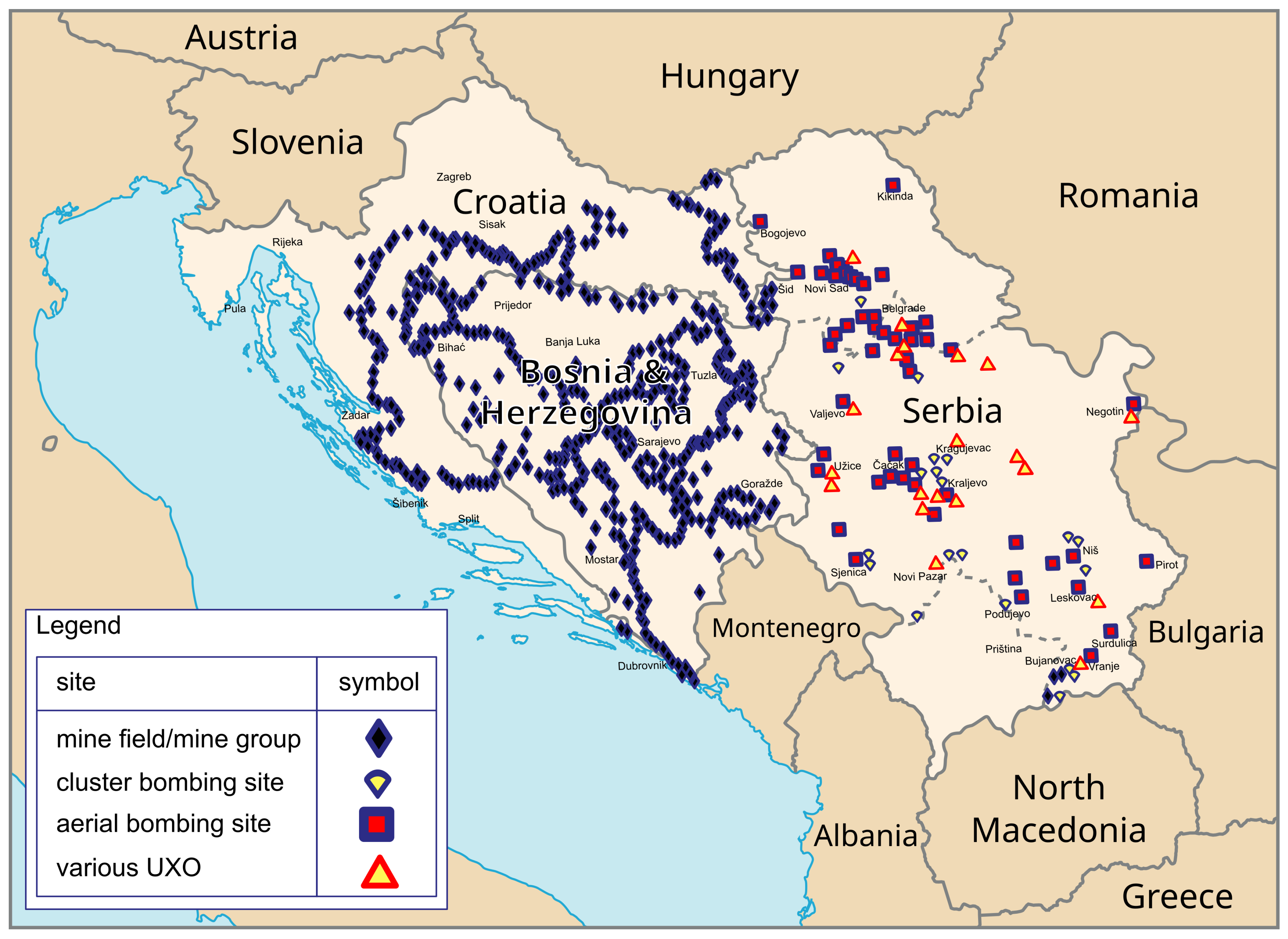
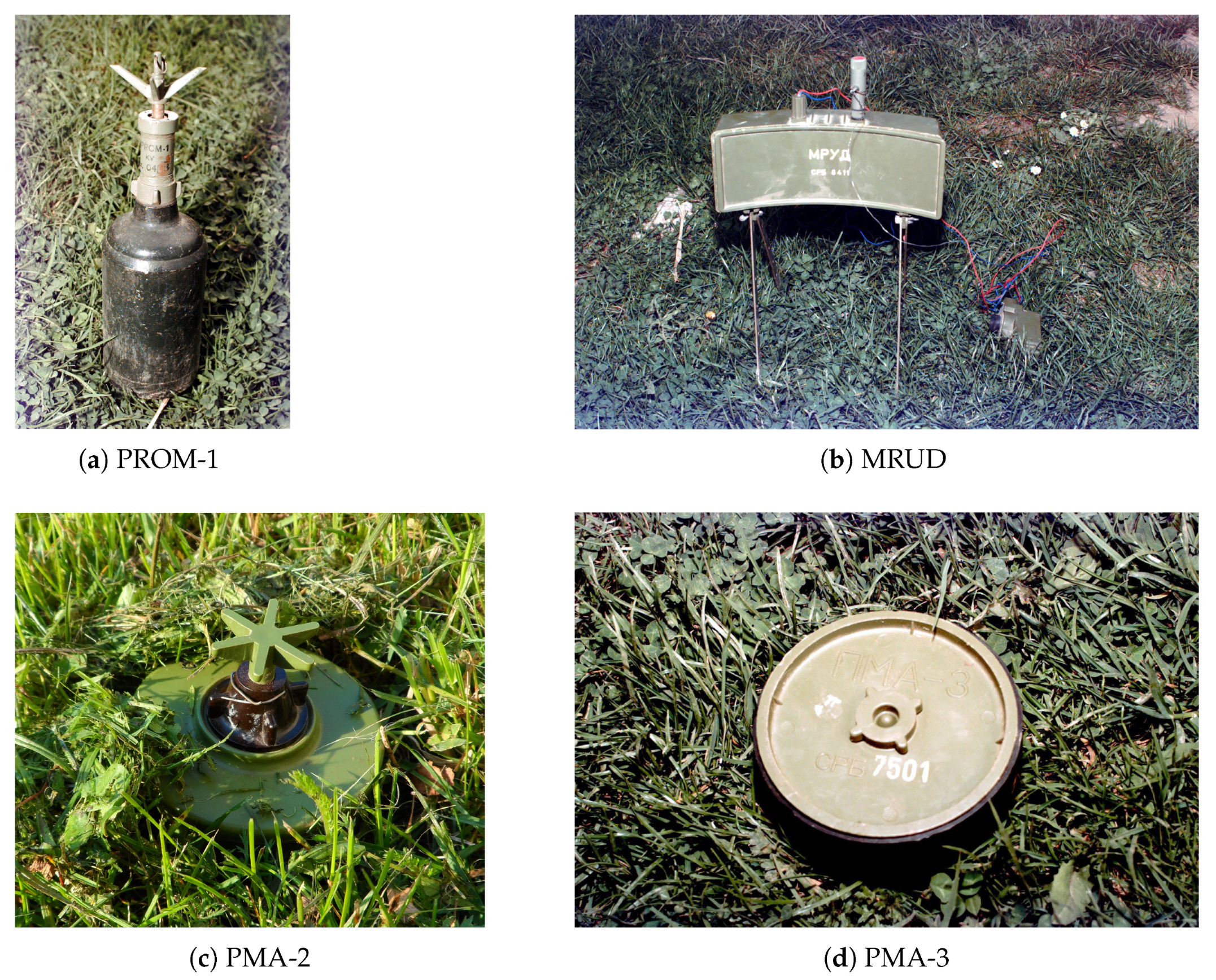
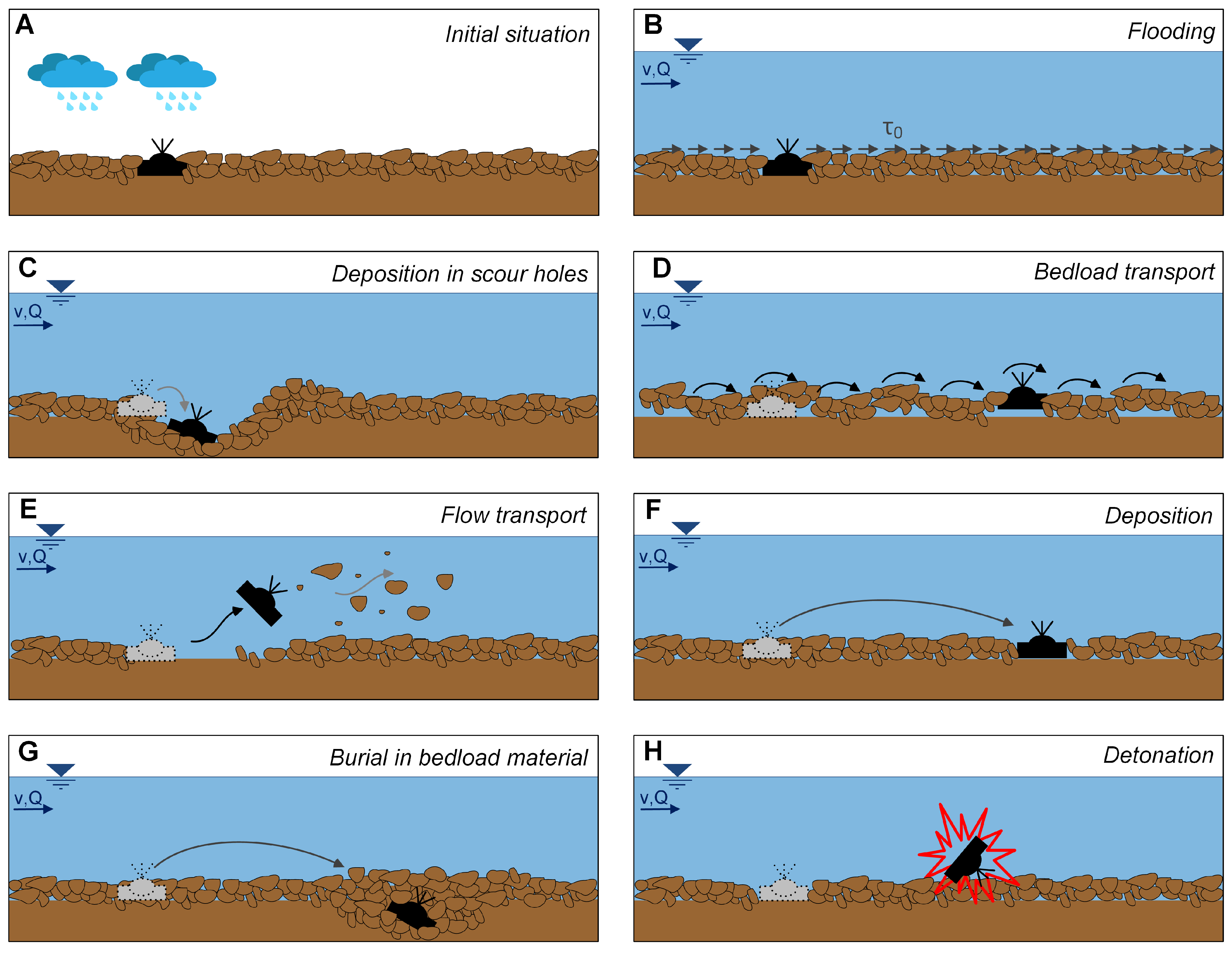
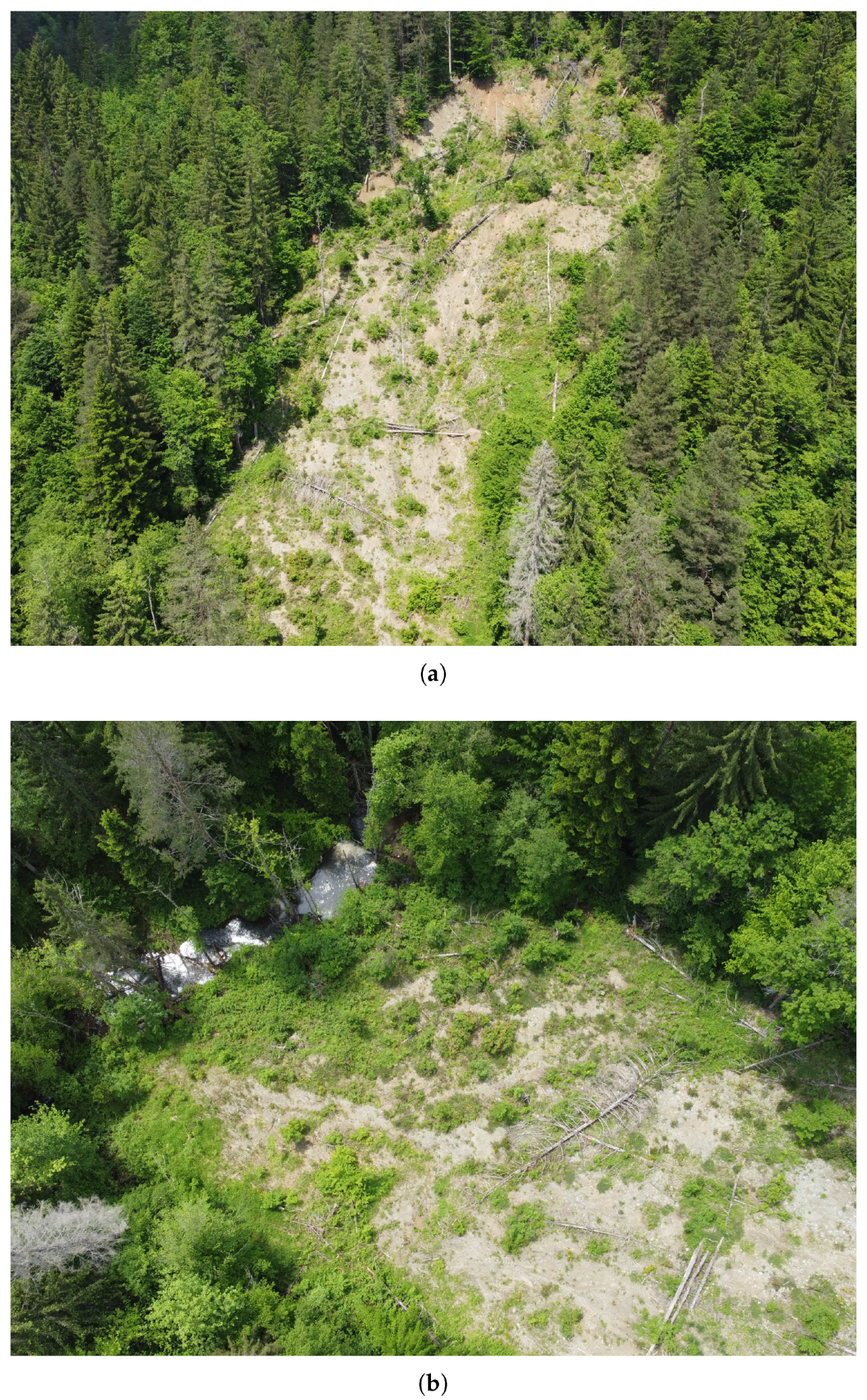
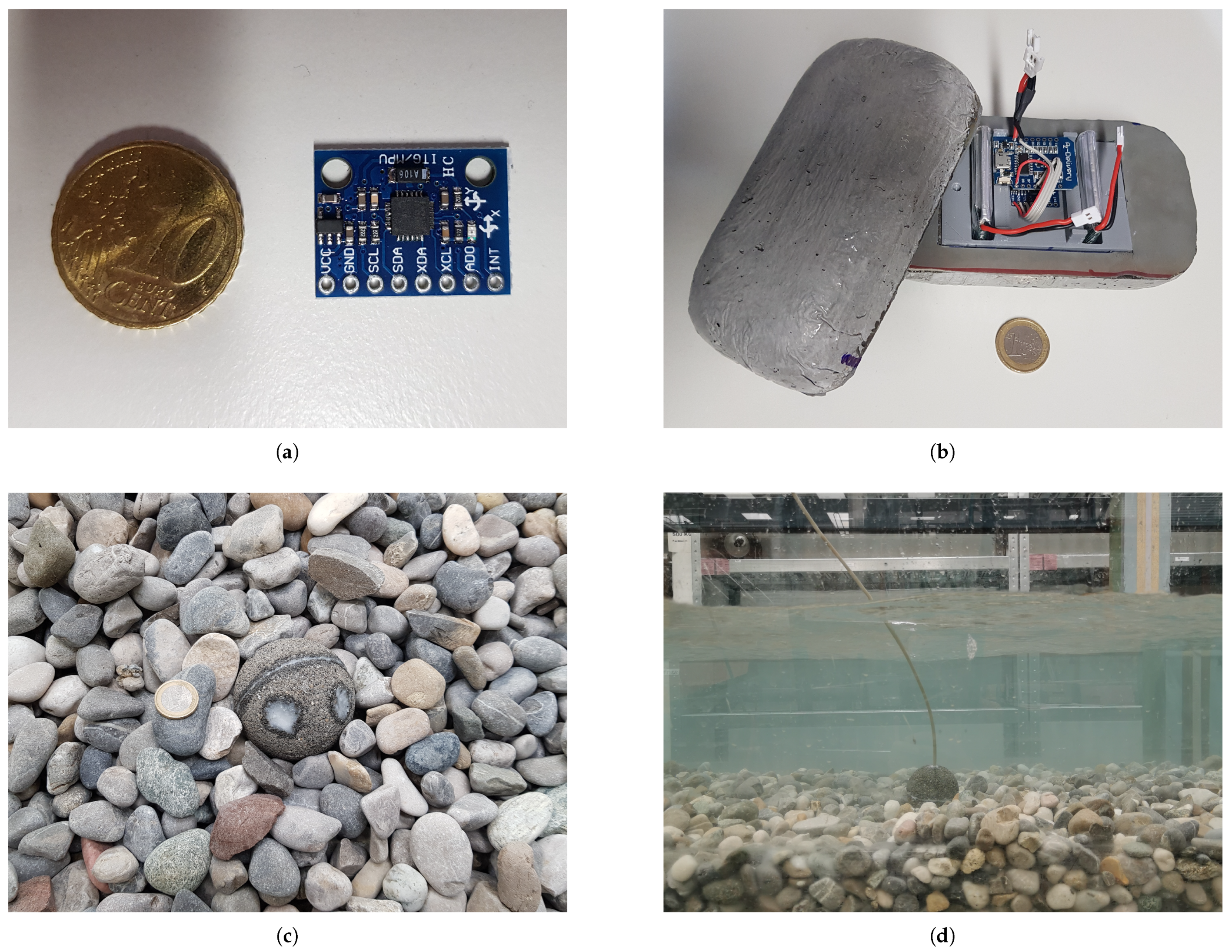
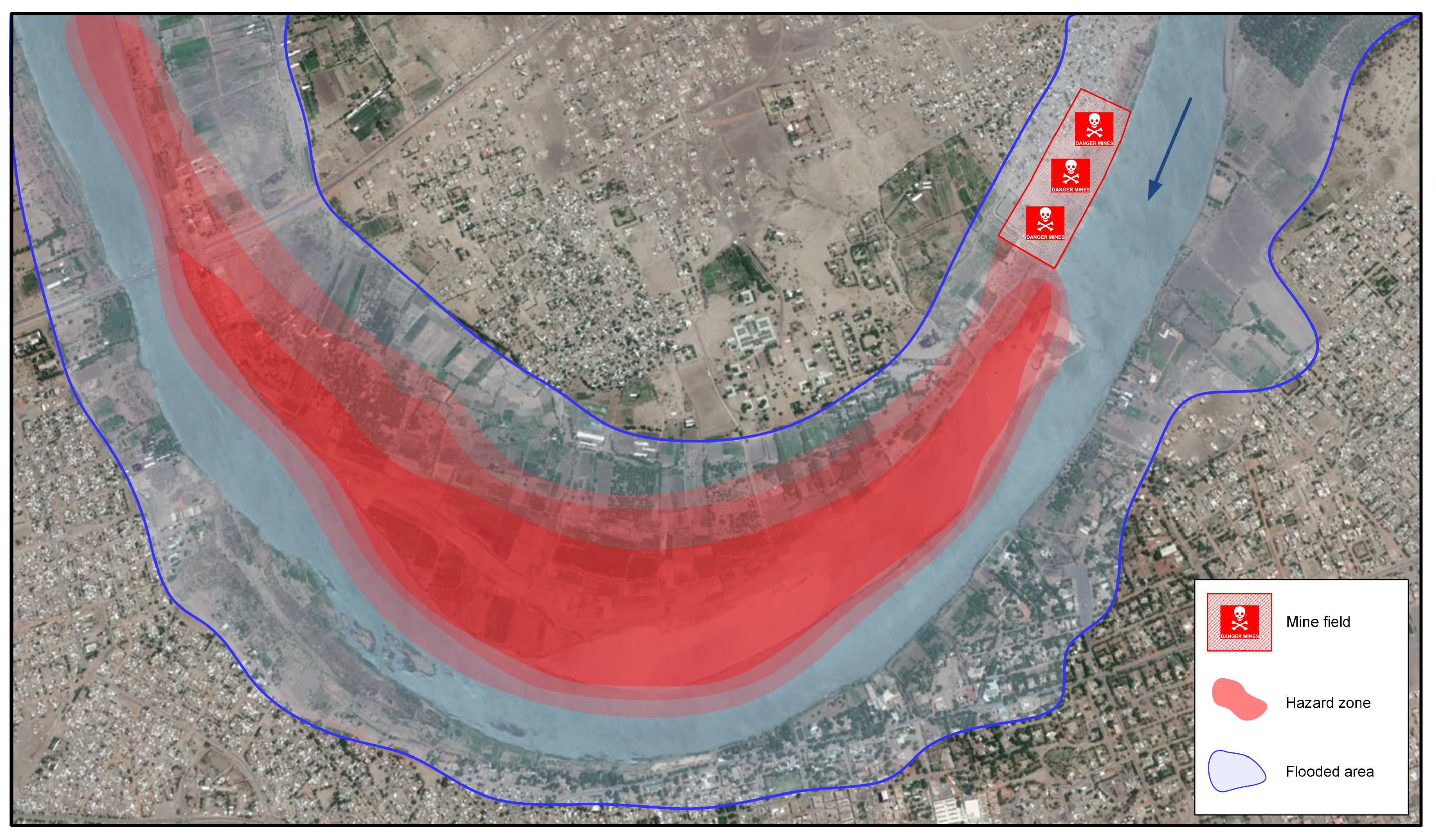
Disclaimer/Publisher’s Note: The statements, opinions and data contained in all publications are solely those of the individual author(s) and contributor(s) and not of MDPI and/or the editor(s). MDPI and/or the editor(s) disclaim responsibility for any injury to people or property resulting from any ideas, methods, instructions or products referred to in the content. |
© 2023 by the authors. Licensee MDPI, Basel, Switzerland. This article is an open access article distributed under the terms and conditions of the Creative Commons Attribution (CC BY) license (https://creativecommons.org/licenses/by/4.0/).
Share and Cite
Baselt, I.; Skejic, A.; Zindovic, B.; Bender, J. Geologically-Driven Migration of Landmines and Explosive Remnants of War—A Feature Focusing on the Western Balkans. Geosciences 2023, 13, 178. https://doi.org/10.3390/geosciences13060178
Baselt I, Skejic A, Zindovic B, Bender J. Geologically-Driven Migration of Landmines and Explosive Remnants of War—A Feature Focusing on the Western Balkans. Geosciences. 2023; 13(6):178. https://doi.org/10.3390/geosciences13060178
Chicago/Turabian StyleBaselt, Ivo, Adis Skejic, Budo Zindovic, and Jens Bender. 2023. "Geologically-Driven Migration of Landmines and Explosive Remnants of War—A Feature Focusing on the Western Balkans" Geosciences 13, no. 6: 178. https://doi.org/10.3390/geosciences13060178
APA StyleBaselt, I., Skejic, A., Zindovic, B., & Bender, J. (2023). Geologically-Driven Migration of Landmines and Explosive Remnants of War—A Feature Focusing on the Western Balkans. Geosciences, 13(6), 178. https://doi.org/10.3390/geosciences13060178








